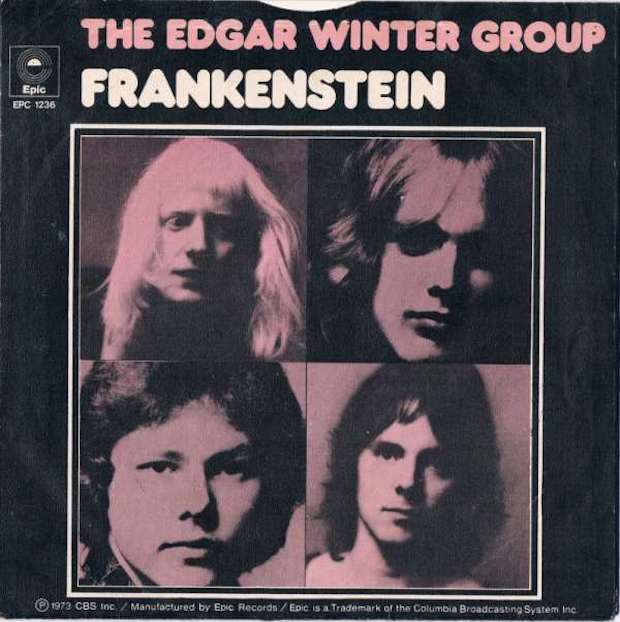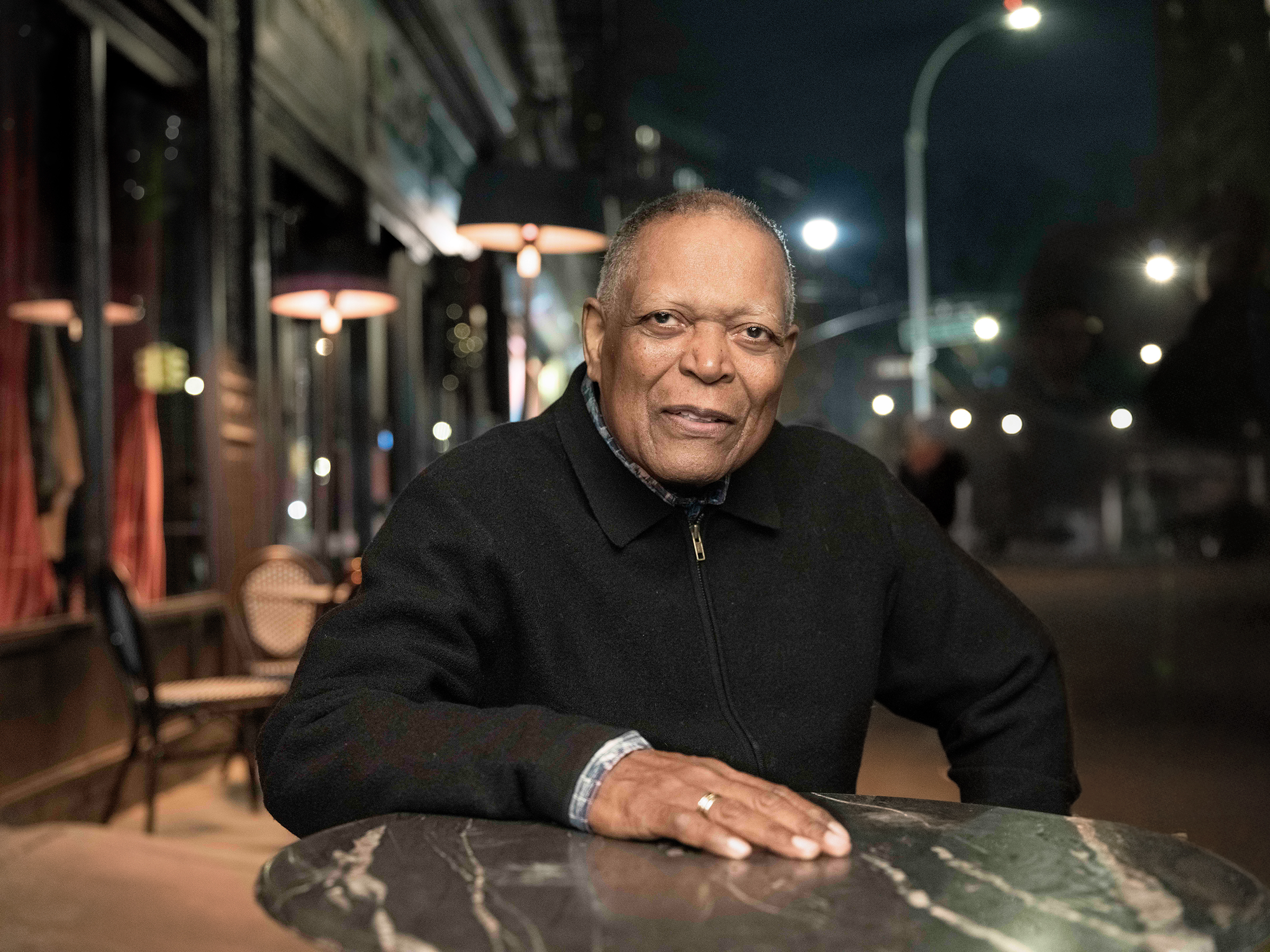In The Number Ones, I'm reviewing every single #1 single in the history of the Billboard Hot 100, starting with the chart's beginning, in 1958, and working my way up into the present.
The Edgar Winter Group - "Frankenstein"
HIT #1: May 26, 1973
STAYED AT #1: 1 week
Edgar Winter had "Frankenstein" in his arsenal for years before he knew what to do with it. When Edgar Winter started out, he was a secret weapon. Edgar and his older brother Johnny came from Beaumont, Texas. They were both born with albinism. Together, they came up playing blues-rock. In 1968, Johnny signed a huge Columbia Records contract, and Edgar played in his band. Edgar was a multi-instrumentalist, one who could switch from keyboard to saxophone to drums in quick succession. So he became a crucial part of Johnny's live show. It must've made for a striking sight: these two brothers with albinism, both monster musicians, taking turns showing off, pushing each other.
And if Edgar was a secret weapon, then "Frankenstein" was his secret weapon. Edgar had come up with a titanic thunder-riff while he was playing in Johnny's band, and he'd use it to show off during live shows. While the band played that riff, Edgar would jump between all these different instruments. Edgar was a showman; he's the guy who had the idea to use a guitar strap to hang a keyboard around his torso. (Nobody was calling it the keytar then, but that's what it was.) "Frankenstein" didn't have a title yet, but it became a vehicle for that showmanship, a framework for him to unleash those onstage pyrotechnics. When Johnny Winter played Woodstock, Edgar was there, and he did "Frankenstein" on that stage. And when Edgar went solo in 1970, he took "Frankenstein" with him.
Edgar had put out a few albums -- first solo, then with his band Edgar Winter's White Trash -- before 1972, when he put together the Edgar Winter Group and recorded They Only Come Out At Night. It's a good-times hard-rock album, something not too different from what bands like Journey and Foghat and Foreigner would use to pack stadiums a few years later. Edgar was the bandleader, but he wasn't the singer; that was bassist Dan Hartman, who would later go solo and make a few hits of his own. (Hartman's highest-charting single was "I Can Dream About You," which peaked at #6 in 1984. It's a 3.) "Frankenstein," the last song on the album and the only instrumental, stands out from the rest of it. It almost didn't make the cut.
In the studio, the Edgar Winter Group knocked out a long, sprawling version of "Frankenstein"; Edgar remembers it being 15 or 20 minutes. At the time, they were just calling it "The Instrumental." They played it the way they'd play it live, with lots of different solos and with Edgar moving from one instrument to the next. Rick Derringer -- who'd already been to #1 as the singer on the McCoys' "Hang On Sloopy" in 1965 -- wasn't a member of the Edgar Winter group, but he produced the record, and he sat in on guitar. Derringer had the idea to edit the song down to a manageable length, so that's what they did, splicing tape together and making it move from highlight to highlight. Edgar tells the story that while they were editing it, drummer Chuck Ruff muttered, "Wow, man, it's like Frankenstein." The title stuck.
"Frankenstein" is a pretty perfect title for the instrumental. That's not because it sounds like it's been spliced together; given the pre-electronic technology they were working with, "Frankenstein" actually sounds pretty seamless. But "Frankenstein" is a good title because it captures the way the song moves: a heavy, shuffling trudge that's always bursting with brute force.
The song exists for Edgar to show off, and he does plenty of that. Edgar noodles at a fuzzed-out electric piano in ways that seems explicitly designed to recall what Stevie Wonder was doing around the same time. He busts out some jazz-inflected saxophone tootles. He gets into an extended drum duel with Ruff, dancing around on the timbales while Ruff plays huge tom rolls. He coaxes chattering alien sounds out of the ARP 2600, an analog synth that looked like a Star Trek control panel. And yet it always comes back to that riff, which dominates everything around it. Musically, the song is pure muscle-car riff-rock, but the structure is a lot like a jazz song, with the players taking all these different solos before coming back to a unifying theme.
Like a lot of the songs that find their way into this column, "Frankenstein" started out as a B-side. The attention was supposed to go to the fairly generic rocker "Hangin' Around." But DJs liked the B-side better. And it made for a hell of a spectacle when the Edgar Winter Group played "Frankenstein" live, or on shows like The Old Grey Whistle Test, where they had the space to stretch it out to nine minutes.
This was a period in chart history where turnover was high, where a new #1 single arrived almost every week. So a fun novelty at least had the chance to slide through and capture the top spot. "Frankenstein" was a fun novelty and a ferocious display of musicianship. And it's cool to think that, however briefly, a song like that could be the most popular single in America.
GRADE: 7/10
BONUS BEATS: Cultishly obsessed-over rock bands love covering "Frankenstein." Phish and They Might Be Giants have both played "Frankenstein" live dozens of times. Here's Phish doing an 11-minute version at a 1997 Madison Square Garden show:
And here's They Might Be Giants covering "Frankenstein" at Emory University in 1992:
PROGRAMMING NOTE: I'm going on vacation next week, so this column will take a week off.






